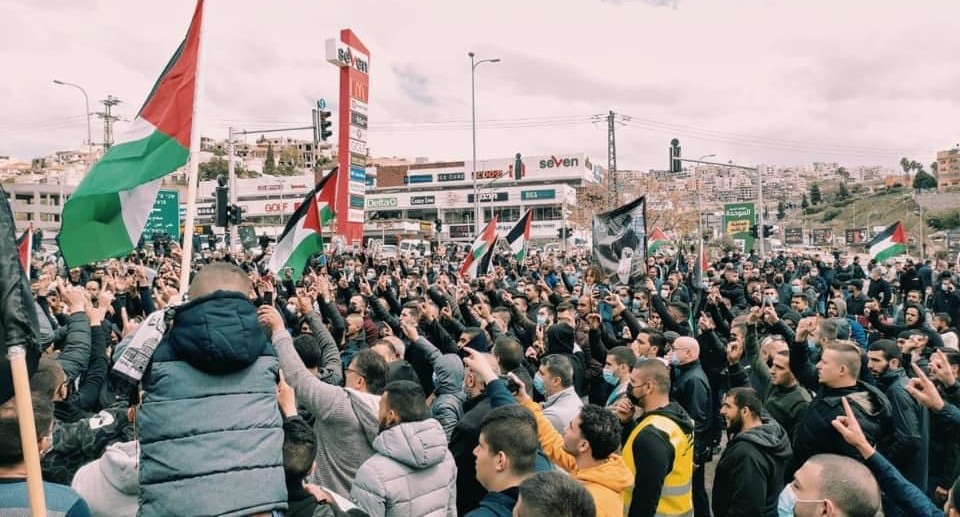Today, Tuesday, March 30, the Palestinian-Arab minority in Israel will mark the 46th annual Land Day with a mass gathering, public addresses, and a wreath-laying ceremony at 16:30 in the city of Sakhnin in the Galilee.
Forty-five years ago, on March 30, 1976, thousands throughout the country protested the pending expropriation of Arab-Palestinian land by Israel’s government in the Galilee. Six Arab-Palestinian citizens of Israel were killed, over a hundred were injured, and hundreds more were arrested. What became known as Land Day, and which has been commemorated every March 30th since then, was the first large-scale nationwide general strike of Arab-Palestinians in Israel after 1948, and marked a watershed in the struggle of the Arab-Palestinian minority in Israel, those who remained within the boundaries of the state following the Nakba, for their rights and equality.

Demonstrators blocked Route 65, the main artery running through Wadi Ara, at the northern city of Umm al-Fahm to protest gross inaction by the government and police against crime and violence in Israel’s Arab communities, Friday, March 26, 2021. (Photo: Zo Haderech)
One of the central messages of this year’s Land Day rallies will be condemnation of the racist policies of the government of Benjamin Netanyahu’s, in particular its failure to implement a significant struggle by Israel’s police against organized crime in the country’s Arab communities, including the confiscation of thousands of illegal weapons there.
Weekly protests against crime and violence in the Arab community and governmental and police inaction continued in Umm al-Fahm last Friday, March 26, where the eleventh consecutive weekly rally was held since the shooting death of a 21-year-old resident of the city in late January. Protesters blocked Route 65, the main artery running through Wadi Ara, to traffic in both directions.
Background to Land Day
On March 11, 1976, Israel’s government, then headed by Yitzhak Rabin, published a plan to expropriate some 20,000 dunams (2,000 hectares or 4,942 acres) of land stretching between the neighboring Arab cities of Sakhnin and Arabeh in the Galilee, 6,300 dunams of which were privately owned by Arab residents of the area. In response to this plan, following a decision by the Central Committee of the Communist Party of Israel, local Arab leaders called for a day of general strikes and mass protests against the confiscation of lands to be held on March 30. The mayor of Nazareth, the communist Tawfiq Ziad, was among the local Arab leaders who made such a call.
To frustrate the protest of the Arab community, the governmental declared a curfew to be imposed on the villages of Sakhnin, Arabeh, Deir Hanna, Tu’ran, Tamra and Kabul, effective from 17:00 on March 29, 1976, the day before the general strike. Rabin’s government declared all demonstrations illegal and threatened to dismiss from their jobs any “agitators,” such as schoolteachers, who encouraged their students to participate. However, the threats were not effective, and many teachers led their pupils out of the classrooms to join the general strike and marches that took place throughout the Arab towns in Israel and which were violently suppressed by the military and police.
In the wake of the first Land Day, a year later, in 1977, the Communist Party of Israel and other progressive forces founded the electoral movement Hadash, the Democratic Front for Peace and Equality, which has been active ever since and which, in 2015, was instrumental in the founding of the Joint List.


